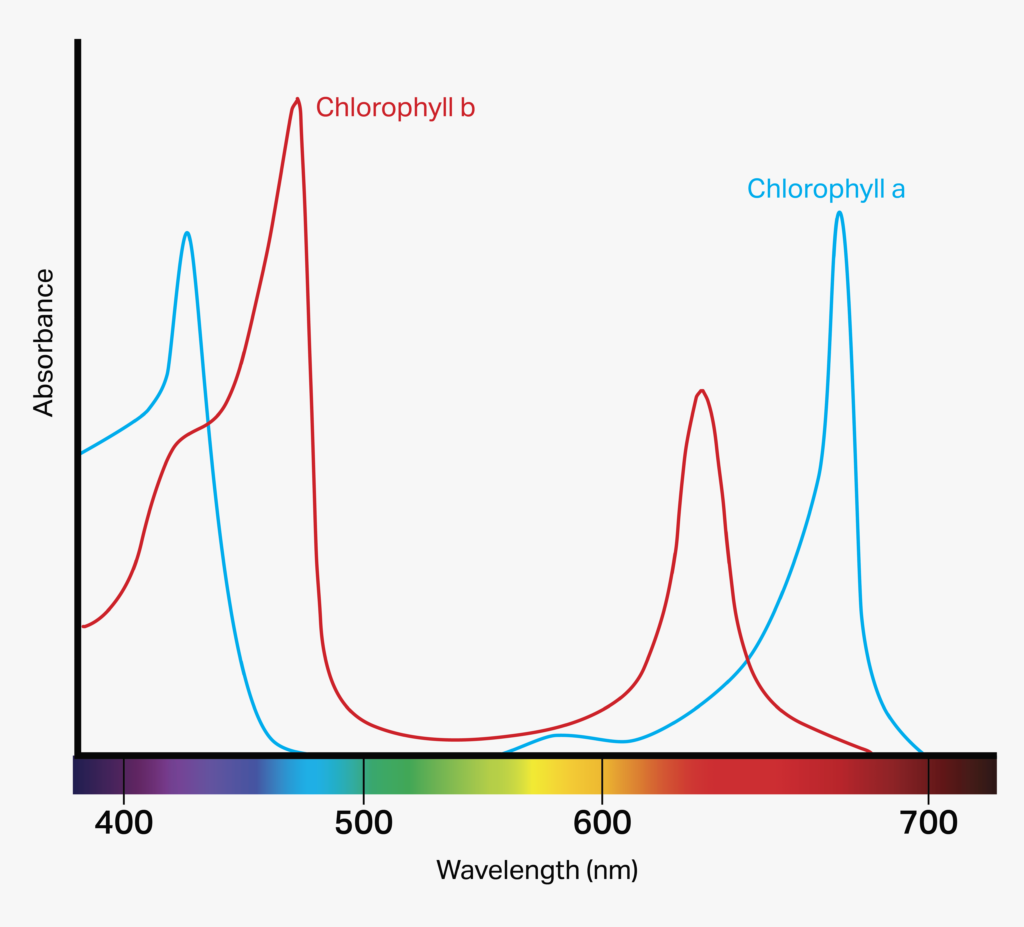LED Grow Lights:
LED grow lights are energy-efficient lights used by indoor and greenhouse farmers and Cannabis growers too. Used as either a sole light source (indoor) or supplementary (greenhouses), LEDs help plants grow using full-spectrum lighting at a lower cost than traditional HPS lamps (1).
Many growers take advantage of LED lights to help scale plant production due to their full light spectrum capabilities, low heat waste and maintenance, and extended lifespan. And given a plant’s physiology and morphology are strongly affected by specific spectrums, LED grow lights can efficiently promote growth in crops (2) at specific times in the growth cycle. With the ability to closely monitor quality, energy output can be easily evaluated for scaling crop production.

Grow Light Spectrum and Cannabis:
The grow light spectrum for Cannabis varies when compared to other plants as growers are focused on maximizing yields, controlling levels of THC and other cannabinoid production, increasing flowering, and to maintain overall uniformity.
Aside from visible colors, Cannabis responds especially well to wavelengths just outside of the PAR range. Therefore, an added benefit of using full spectrum LEDs is the ability to use specific doses of ultra-violet wavelengths (100-400nm), and far-red wavelengths (700-850nm) outside of the PAR range.
For example, an increase in far-red (750nm-780nm) can help stimulate Cannabis stem growth and flowering – something growers want, whereas necessary blue light in minimal amounts, can prevent uneven elongation of stems and leaf shrinkage.
So, what’s the ideal grow light spectrum for Cannabis? There’s no single spectrum since varying light exposure promotes certain plant morphology during different stages of growth. The chart below explains the concept of outer-edge PAR light spectrum use.
Personal vs. Commercial Cannabis:
The difference with personal vs commercial grow lights for Cannabis can be determined by a number of factors. Firstly, the available light spectrums in commercial LED grow lights will include the full PAR range and beyond – which is particularly advantageous for Cannabis growers.
Commercial grow lights can be wirelessly configured to put out specific wavelengths and intensities at certain intervals in a 24-hour cycle – grow light settings often work in conjunction with a grower’s HVAC systems too.


With personal LED grow lights, lumens per watt will likely be lower – which makes them less energy efficient with smaller potential yields. Many are not broad spectrum and may only offer small spectrums of blue and red light. Additionally, while personal grow lights will still be inexpensive to run, other factors to be considered include noisier fans, inferior quality plastic casing, shorter LED lifespans and overheating issues.
Should I Use a Different Light Spectrum for Different Plants?

In some crops, blue light can benefit nutritional levels and coloring, and a higher red to far-red ratio can help with leaf size and flowering. It’s why today’s full-spectrum LEDs are so advanced – because by selecting the right quantities of red and blue light (4), chlorophyll pigments absorb more light they need.
Cannabis growers – who pay attention to UVB/blue for its various structural and THC-potency benefits, which we’ll get into, are predominantly concerned with leaf size and flowering. Therefore, far-red and red light is relatively more important to boost their yields.
Other indoor growers are also experimenting with the controlled use of far-red spectrum, like salad leaf farmers for example. Plants associate this spectrum with shading from direct sunlight, which would happen lower down the canopy, causing leaf & stem stretching as the plant reaches out for sunlight.
This means when used strategically, bigger leaves and flowering can occur without unnecessary stress. So while there is no specific LED grow light spectrum for any particular plant, the ratio of red to blue light is very important to maximize growth and the rate of photosynthesis.